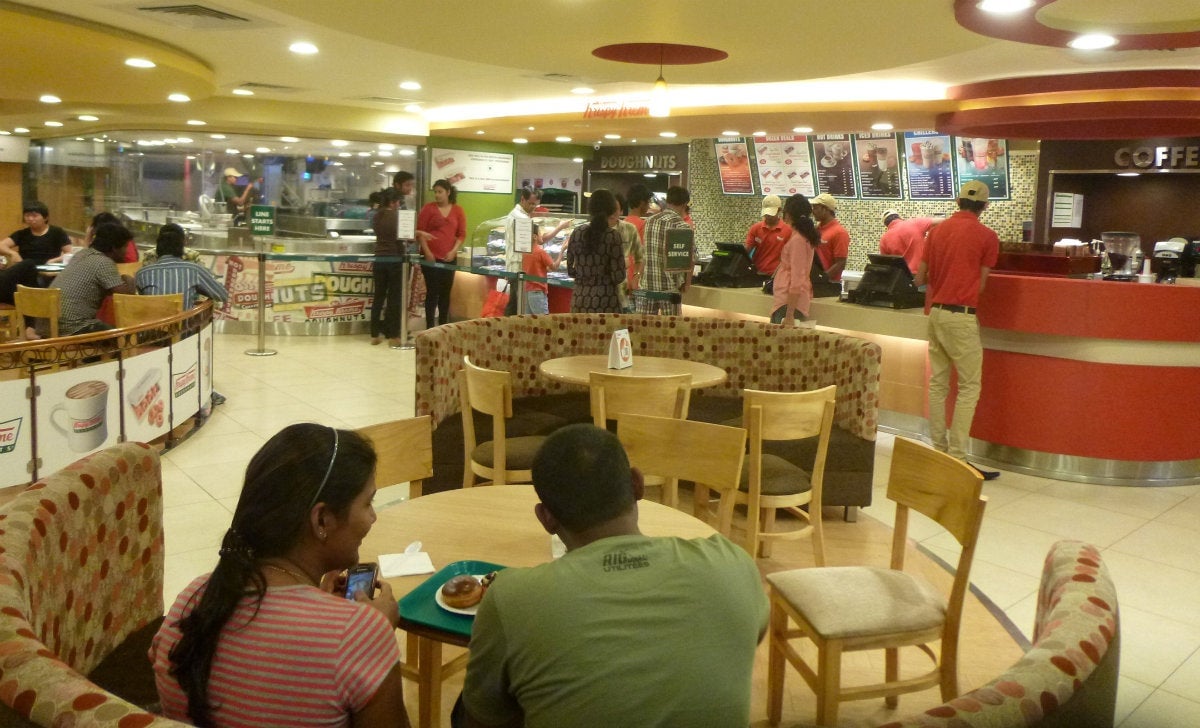America outsources yet another dilemma to India: Krispy Kreme or Dunkin’ Donuts?
Let the donut wars begin in India.

Let the donut wars begin in India.
In January, the country’s first Krispy Kreme Doughnuts opened in Bangalore and was met with a red carpet and a line of customers eager to win a year’s supply of donuts. Last week, Dunkin’ Donuts opened its ninth Indian outlet in the northern city of Chandigarh.
The sweet reception is a stark difference from fast-food chains past. In 1995, the KFC opening in Bangalore, India’s first, was met with violent riots from farmers and Hindu activists.
But the donut retailers’ India expansions reflect different strategies: Dunkin’ Donuts is simply growing its Asia arm, while Krispy Kreme is looking to this emerging market to save itself.
Dunkin’ Donuts shares a local partner, Jubilant FoodWorks, with Domino’s. The Massachusetts company had a solid earnings report from the final quarter of 2012, and plans 100 stores in India, including ones in Bangalore and Mumbai. Meanwhile, Krispy Kreme’s latest financials were not as positive. The company is banking on India’s booming consumers to give its stockholders a boost. It partnered with the Dubai-based Landmark Group to franchise 80 stores in five years across south and west India, its 23rd country.
The market is lucrative. India’s cafe revenues are expected to grow 14% a year, reaching $410 million by 2017, according to the consultancy Technopak, growth propelled by the arrival of Starbucks last October.
“There’s a novelty to it,” explained Atulaa K., a law student drinking iced coffee at Krispy Kreme. The food was not exceptional, she admitted, but she and her friends were drawn in “mostly because it’s a brand we follow.”

Krispy Kreme’s menu is Indian-ized, but not Indian. The custard mango donut goes for 52 rupees ($0.96). It is abundantly sweet, but the cheaper original glazed, also made visibly on-site, tastes identical to the confection in US Krispy Kreme’s. Dunkin’ Donuts, with eight stores in New Delhi since opening last May, offers roasted coconut and pistachio saffron flavors, as well as vegetarian sandwiches. But neither company sells the Indian sweets found on nearly every street corner.
But cracking India’s fast-food market without a recognizable name has proven tough. Investors in Nando’s, a South African chain, recently pulled the plug on expansion plans, and several domestic restaurants are struggling.
Making predictions of the Indian market is notoriously difficult as well. Dev Amritesh, COO of Dunkin’ Donuts India, told The Hindu, “it doesn’t respond exactly the same way as the markets in the rest of the world do.” Chains must manage to keep prices low, while battling rickety supply chains, high real estate, and rising food inflation.
Customers in India’s metropolises, where diabetes is surging, may become health conscious and steer away from sweets. And US companies are struggling to pitch breakfast foods overseas.
Yet for the moment, donuts have loyal fans in India. Atulaa found the taste at the US outlet on par with local donut shops—and the ambiance far better.
Prasad Bhat was among the hundreds in line for the Krispy Kreme opening, excited to try it again after returning, in 2006, from a stint in the US. The svelte engineer now buys a dozen a week. “I met a nutritionist about a month ago, and she was kind of disappointed that I was eating a lot of donuts,” he recalled. “I said, ‘I cannot stop.'”